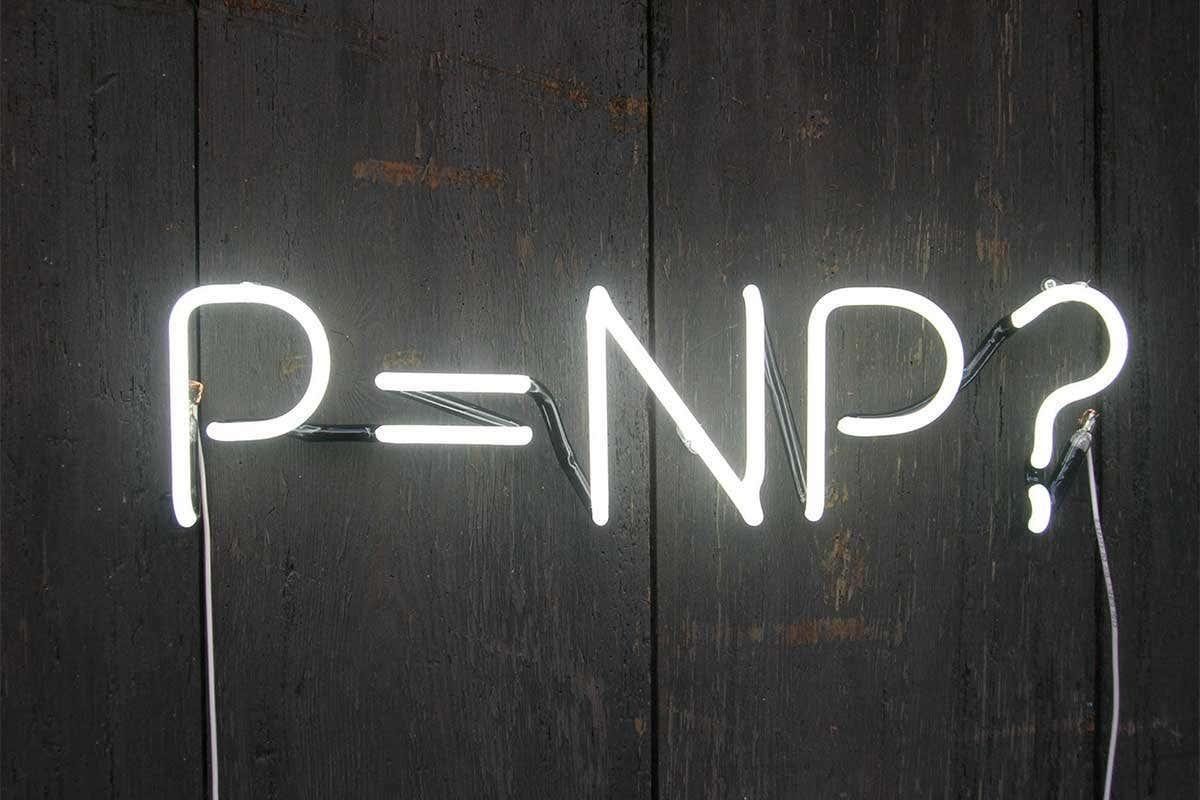Knot theory is linked to many other branches of science, including those that tell us about the cosmos.
The mathematical study of knots started with a mistake. In the 1800s, mathematician and physicist William Thomson, also known as Lord Kelvin, suggested that the elemental building blocks of matter were knotted vortices in the ether: invisible microscopic currents in the background material of the universe. His theory dropped by the wayside fairly quickly, but this first attempt to classify how curves could be knotted grew into the modern mathematical field of knot theory. Today, knot theory is not only connected to many branches of theoretical mathematics but also to other parts of science, like physics and molecular biology. It’s not obvious what your shoelace has to do with the shape of the universe, but the two may be more closely related than you think.
As it turns out, a tangled necklace offers a better model of a knot than a shoelace: to a mathematician, a knot is a loop in three-dimensional space rather than a string with loose ends. Just as a physical loop of string can stretch and twist and rotate, so can a mathematical knot – these loops are floppy rather than fixed. If we studied strings with free ends, they could wiggle around and untie themselves, but a loop stays knotted unless it’s cut.
Most questions in knot theory come in two varieties: sorting knots into classes and using knots to study other mathematical objects. I’ll try to give a flavour of both, starting with the simplest possible example: the unknot.
Draw a circle on a piece of paper. Congratulations, you’ve just constructed an unknot! This is the name for any loop in three-dimensional space that is the boundary of a disc. When you draw a circle on a piece of paper, you can see this disc as the space inside the circle, and your curve continues to be an unknot if you crumple the paper up, toss it through the air, flatten it out and then do some origami. As long as the disc is intact, no matter how distorted, the boundary is always an unknot.
Things get more interesting when you start with just the curve. How can you tell if it’s an unknot? There may secretly be a disc that can fill in the loop, but with no limits on how deformed the disc could be, it’s not clear how you can figure this out.
Two unknots
It turns out that this question is both hard and important: the first step in studying complicated objects is distinguishing them from simple ones. It’s also a question that gets answered inside certain bacterial cells each time they replicate. In the nuclei of these cells, the DNA forms a loop, rather than a strand with loose ends, and sometimes these loops end up knotted. However, the DNA can replicate only when the loop is an unknot, so the basic life processes of the cell require a process for turning a potentially complicated loop into an unknotted one.
A class of proteins called topoisomerases unknot tangled loops of DNA by cutting a strand, moving the free ends and then reattaching them. In a mathematical context, this operation is called a “crossing change”, and it’s known that any loop can be turned into the unknot by some number of crossing changes. However, there’s a puzzle in this process, since random crossing changes are unlikely to simplify a knot. Each topoisomerase operates locally, but collectively they’re able to reliably unknot the DNA for replication. Topoisomerases were discovered more than 50 years ago, but biologists are still studying how they unknot DNA so effectively.
When mathematicians want to identify a knot, they don’t turn to a protein to unknot it for them. Instead, they rely on invariants, mathematical objects associated with knots. Some invariants are familiar things like numbers, while others are elaborate algebraic structures. The best invariants have two properties: they’re practical to compute, given the input of a specific knot, and they distinguish many different classes of knots from each other. It’s easy to define an invariant with only one of these properties, but a computable and effective knot invariant is a rare find.
The modern era of knot theory began with the introduction of an invariant called the Jones Polynomial in the 1980s. Vaughan Jones was studying statistical mechanics when he discovered a process that assigns a polynomial – a type of simple algebraic expression – to any knot. The method he used was technical, but the essential feature is that no amount of wiggling, stretching or twisting changes the output. The Jones Polynomial of an unknot is 1, no matter how complicated the associated disc might be.
Jones’s discovery caught the attention of other researchers, who found simpler techniques for computing the same polynomial. The result was an invariant that satisfies both the conditions listed above: the Jones Polynomial can be computed from a drawing of a knot on paper, and many thousands of knots can be distinguished by the fact that they have different Jones Polynomials.
However, there are still many things we don’t know about the Jones Polynomial, and one of the most tantalising questions is which knots it can detect. Most invariants distinguish some knots while lumping others together, and we say an invariant detects a knot if all the examples sharing a certain value are actually deformations of each other. There are certainly pairs of distinct knots with the same Jones Polynomial, but after decades of study, we still don’t know whether any knot besides the unknot has the polynomial 1. With computer assistance, experts have examined nearly 60 trillion examples of distinct knots without finding any new knots whose Jones Polynomials equal 1.
The Jones Polynomial has applications beyond knot detection. To see this, let’s return to the definition of an unknot as a loop that bounds a disc. In fact, every knot is the boundary of some surface – what distinguishes an unknot is that this surface is particularly simple. There’s a precise way to rank the complexity of surfaces, and we can use this to rank the complexity of knots. In this classification, the simplest knot is the unknot, and the second simplest is the trefoil, which is shown below.
Trefoil knot
To build a surface with a trefoil boundary, start with a strip of paper. Twist it three times and then glue the ends together. This is more complicated than a disc, but still pretty simple. It also gives us a new question to investigate: given an arbitrary knot, where does it fit in the ranking of knot complexity? What’s the simplest surface it can bound? Starting with a curve and then hunting for a surface may seem backwards, but in some settings, the Jones Polynomial answers this question: the coefficients of the knot polynomial can be used to estimate the complexity of the surfaces it bounds.
Joan Licata
Knots also help us classify other mathematical objects. We can visually distinguish the two-dimensional surface of sphere from the surface a torus (the shape of a ring donut), but an ant walking on one of these surfaces might need knot theory to tell them apart. On the surface of a torus, there are loops that can’t be pulled any tighter, while any loop lying on a sphere can contract to a point.
We live inside a universe of three physical dimensions, so like the ant on a surface, we lack a bird’s eye view that could help us identify its global shape. However, we can ask the analogous question: can each loop we encounter shrink without breaking, or is there a shortest representative? Mathematicians can classify three-dimensional spaces by the existence of the shortest knots they contain. Presently, we don’t know if some knots twisting through the universe are unfathomably long or if every knot can be made as small as one of Lord Kelvin’s knotted vortices.
For more such insights, log into www.international-maths-challenge.com.
*Credit for article given to Joan Licata*





